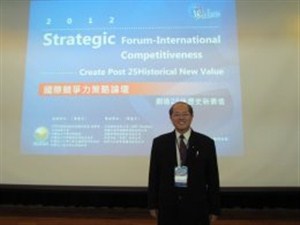|
  
|
Financial Risk Management (FRM File 006)- Active Risk Management Techniques
Financial Risk Management (FRM File 006) Active Risk Management Techniques
What techniques can a firm use to limit and proactively manage risk? What necessary procedures can be implemented to adequately manage risks for which firm management is responsible?
If management is going to control risk, it must establish certain procedures. The goal of a risk management system is to measure and manage the firm’s exposure to various risks that management has identified as central to its franchise. For each risk category, the firm employs a four-step procedure to measure and manage firm-level exposure . In general, a firm uses these tools to accurately define the risk, limit exposure to acceptable levels, and encourage decision makers to manage risk in a manner that is consistent with management’s goals and objectives.
Step 1. Establish Standards and Reports.
Standard setting and financial reporting are the sine qua non of any risk management system. Underwriting standards, risk categorizations, and review standards are all traditional tools of risk control. Management needs consistent evaluation and rating of exposure to understand the embedded risks in the portfolio and the extent to which it must mitigate or absorb these risks.
Standardized financial reporting is essential for investors to gauge asset quality and firm-level risk. The need goes beyond public reports and audited statements to management information on asset quality and risk posture. Such internal reports need similar standardization and need to be more frequent, with daily or weekly reports substituting for the quarterly GAAP reports.
Step 2. Impose Position Limits and Rules.
A firm must impose limits to cover exposures to counterparties, credit, and overall position concentrations relative to systematic risks. In general, each person who can commit capital — traders, lenders, and portfolio managers — should have a well-defined limit. Summary reports to management can show counter-party, credit, and capital exposure by business unit periodically. In large organizations with thousands of positions maintained and daily transactions, accurate and timely reporting is quite difficult but perhaps even more essential.
Step 3. Set Investment Guidelines and Strategies.
A firm should outline investment guidelines and strategies for risk taking in the immediate future in terms of commitments to a particular market area, the extent of assetliability mismatching, or the need to hedge against systematic risk at a particular time. Guidelines can advise on the appropriate level of active management, given the state of the market and senior management’s willingness to absorb the risks implied by the aggregate portfolio. Such guidelines lead to hedging and asset liability matching. In addition, securitization and syndication are rapidly growing techniques for participants who want to reduce their exposure in line with management’s guidelines. These transactions facilitate asset financing, reduce systematic risk, and allow management to concentrate on customer needs for origination and servicing rather than funding.
Step 4. Align Incentive Contracts and Compensation.
To the extent that management can enter into incentive-compatible contracts with line managers and relate compensation to the risks they bear, the need for elaborate, costly controls lessens. However, such incentive contracts require accurate position valuation, proper cost and capital accounting systems, substantial cost accounting analysis, and risk weighting that may take years to establish. Notwithstanding the difficulty, well-designed compensation contracts align the goals of managers with other stakeholders in a desirable way.20 Most financial debacles can be traced to the incompatibility of incentives.
Written by Dr. Chao Yuang Shiang
Faculty, Dep. of Finance, Nan Hua university
趙永祥 博士
(南華大學財務金融學系暨財務管理研究所 專任助理教授)
19-August-2017
********************************************
趙永祥 博士 (Dr. Chao Yuang Shiang)
  |
凡事唯有投入,結果才能深入; 凡事唯有付出,結果才能傑出;
凡事唯有磨鍊,結果才能熟練; 凡事唯有不煩,結果才能不凡。
能與智者同行,你會不同凡響; 能與高人為伍,你能登上巔峰。
你雖不能改變環境,但卻可以轉換心境;你雖不能樣樣勝利,但卻可以事事盡力。
Dr. Chao Yuang Shiang (PH.D in management), Assistant professor,Dep.of Finance,Nanhua University,Taiwan.
website:amazon.com/author/drchao |
|


 新浪微博
新浪微博 QQ空间
QQ空间 人人网
人人网 腾讯微博
腾讯微博 Facebook
Facebook Google+
Google+ Plurk
Plurk Twitter
Twitter Line
Line

